Hyundai Tucson review: inside and out, it's now up with the best in class
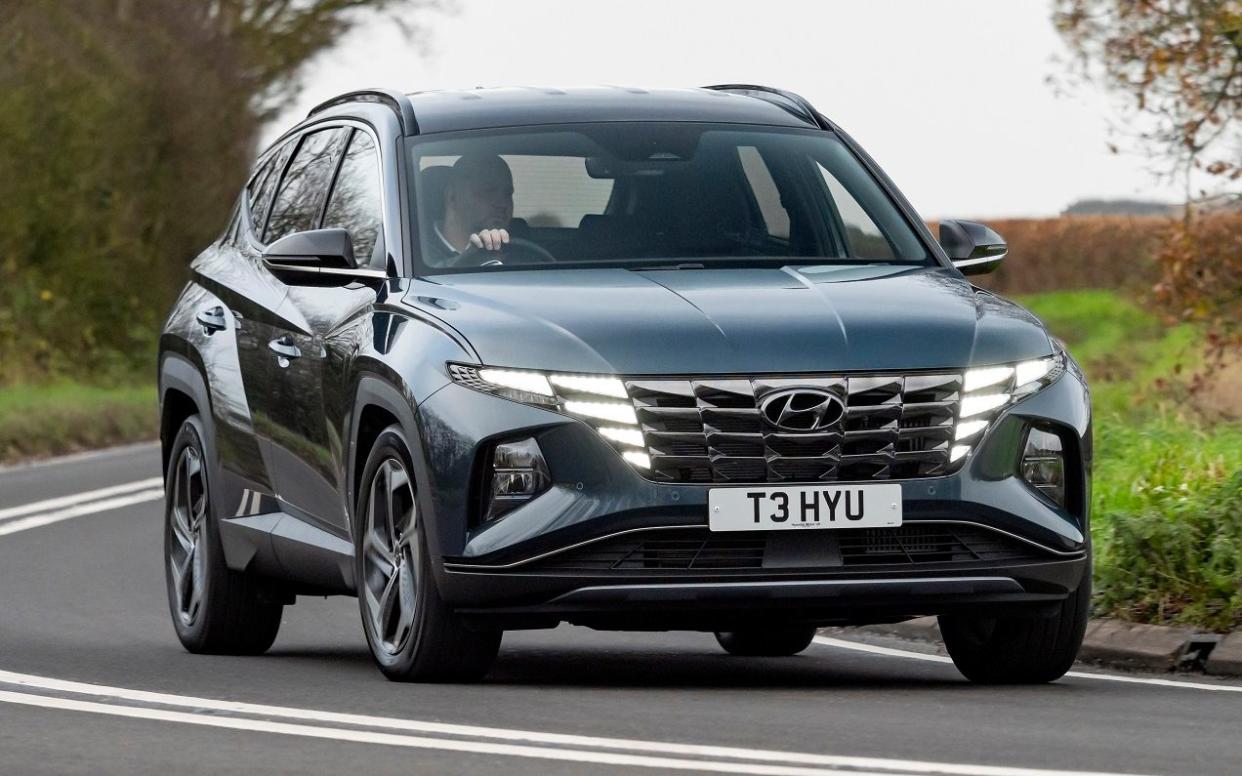
Comprehensively revamped and updated, the fourth generation of Hyundai’s popular family crossover/SUV, the Tucson, is on sale in the UK right now, although early supplies might be a bit restricted for obvious reasons.
We’ve only just been able to get our hands on one and drove it on UK roads this week.
You could be excused for feeling a bit confused about Hyundai’s naming policy for its middling SUV. When it was launched in 2004 as a sister to Kia’s Sportage, the Tucson was named after Arizona’s second-largest city 60 miles north of the US/Mexican border, founded in 1775 and host to some pretty dastardly lawlessness during the 1800s cowboy era. Hyundai didn’t keep the name long.
By 2009 and the launch of the “fluidic sculpture” design, second-generation model, Hyundai had decided that its global corporate footprint called for a name change to ix35.
For the third-generation model of 2015 it was back to Tucson, which continued through the 2019 facelift – privately Hyundai admits that its market research showed that buyers recognised its place-named vehicles such as Tucson and Santa Fe more than they did the company name.

This gen-four version features “parametric dynamics” design (although it’s also been named “sensuous sportiness”). Last year SangYup Lee, head of Hyundai’s global design centre, outlined his plan for all of the South Korean car maker’s models to carry their own identity and design.
While the new model will be produced in two wheelbases and lengths, the European Tucson, which is made at the company’s Czech Republic factory, is the short (2,680mm) wheelbase version, which means that overall it’s a fraction larger all round than the outgoing model.
Where does it fit into the market?
With more than 7 million sales worldwide since the original launch, 1.4 million of them in Europe, the Tucson is Hyundai’s best-selling model and a pretty big deal for the South Koreans. Be assured, the horses have not been spared for this new version.

In the UK the Tucson has been selling in the top seven or so in the class, which is imperiously topped by Nissan’s Qashqai, followed far behind by the VW Tiguan, Kia’s Sportage and Niro, then the Ford Kuga. Hyundai wants to sell getting on for 18,000 units this year which, depending on what happens to the market, will place the Tucson somewhere in the top five at least.
So, Lee’s body restyle is sharp but derivative, with a front end which looks like an explosion in an experimental pasta-shapes department, complete with hidden daylight running lights and strip-bar lighting at the back. Actually, it’s pretty good looking, although the front wings wouldn’t look out of place on a Voisin – and please buy it in anything other than silver-grey, since that shade wipes out any bodywork distinction.
Trims, equipment and engines
There are three main trim levels: SE Connect, Premium and Ultimate. Hyundai has ditched the previous base model, so SE Connect is pretty loaded, with a leather steering wheel and gear knob, dual-zone air conditioning, cruise control, heated and folding door mirrors, rear parking sensors and a rear-view camera.

Safety electronics consist of Forward Collision Assist, which recognises cars, pedestrians and bicycles, intelligent cruise control, with lane assistance (which can be switched off) and multi-collision prediction braking. There’s a 10.25in digital instrument and equally sized centre touchscreen.
Four powertrains are available at first, with a diesel and plug-in hybrid to follow later this year. All are based on Hyundai’s 1.6-litre turbocharged petrol engine, with a 148bhp base drivetrain, then the option of a 48-volt mild hybrid system; there’s also a 178bhp mild hybrid option and a full hybrid with 227bhp.
The gearbox depends on the engine choice, with two types of six-speed manual, a six-speed automatic and a seven-speed dual-clutch automatic. Four-wheel drive is an option on some models.
Inside job
The facia and centre console borrow heavily from the more advanced cars in the Hyundai stable, such as the Nexo hydrogen fuel-cell-powered EV. Gear selection on the automatic six-speed is via a pushbutton shift (Bristol anyone?) and the glass and graphics are modern, easy to see and (fairly) logical to use.
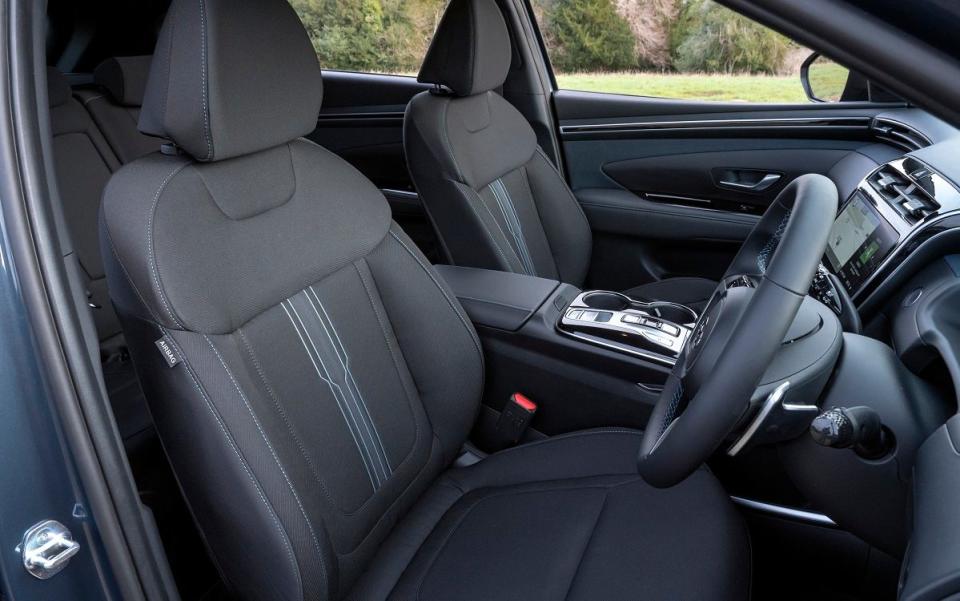
It’s nicely designed, too, better than rivals and as good as some more premium opposition. Big sweeps of dashboard are covered in twill fabrics and soft-touch plastics, there’s a first-rate balance of controls, with a separate panel for the heater controls and proper buttons for often-used functions.
The seats are comfy, though there are seams which cut into your backside and there’s virtually no side support. Storage space is pretty good, with large door pockets and a good cubby hole in the centre console. The cheaper SE Connect has a proper ignition key, though higher specs levels get keyless ignition (worst luck) and all the cars have electronic handbrakes.

In the back, there’s lots of leg and head room and the bench is wide enough for three adults across. The boot floor is artificially high (there’s no spare wheel, just a pump and a tin of sealant), which means the 40/20/40 per cent folding seat backs give an almost flat load bed and there’s room under the boot floor for the load/luggage cover when it isn’t in use. The rear-seats-up load volume of 616 litres is much bigger than the Qashqai or Kuga and about the same size as the Tiguan.
On the road
It’s here that Tucson has let itself down in the past and the new version at least starts with a good spec sheet. The standard dampers have been given a makeover with a bit more adjustment to the way they react to movement, the steering rack now comes from a European supplier and the MacPherson strut front, multi-link independent rear suspension has been titivated. There’s even electronically adjustable damping on the top models.
Yet in this most popular model, without adjustable damping, the steering feels inert and over-assisted. The ride on standard 17-inch wheels is sharp over bumps and there’s too much body roll occurring too fast on turning in to corners, though the body control catches up mid-corner. There’s a diagonal mismatch to the damping and too much side-to-side movement over broken-edged roads.
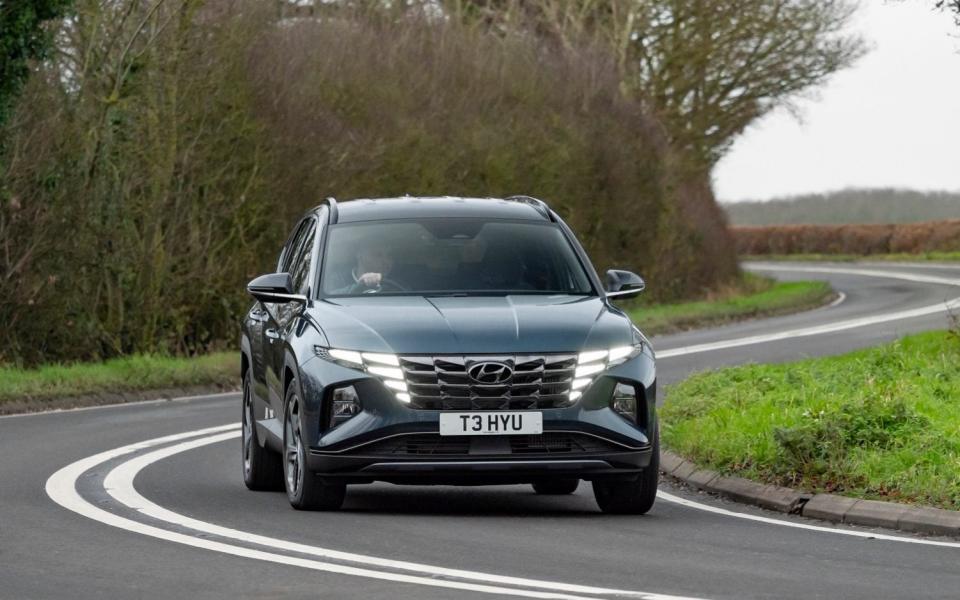
It just about passes muster, but you end up driving to its capabilities and rather wishing it was just a bit more, well, dynamic. It also pitches under braking, but we’ll come back to the brakes.
With 227bhp and 195lb ft to tug just under 1.7 tonnes, the performance is brisk and the 0-62mph acceleration claim of eight seconds feels fully believable. So powerful, in fact, the spike of electrical torque will spin the front wheels when pulling away on wet roads and through tight corners.
Well engineered
Overtaking is pretty simple and on the whole the Tucson’s drivetrain feels well engineered, refined and quiet (unless you absolutely floor it, whereupon the engine gets a bit frantic).
Slowing, where the car is combining electrical regeneration and friction brake linings, is much, much better than anything Hyundai has offered before. There’s a surge or two and the soft front end dips a bit, but it’s quite easy to drive smoothly and briskly.
Outside noises are pretty well damped, too and motorway travel is quite refined. Around town, though, that sloppy/harsh ride quality mars the experience and it’s also quite a handful to manoeuvre as you can’t see or discern where any of the corners are, and at 4,500mm long, this is quite a lummox to be parking.
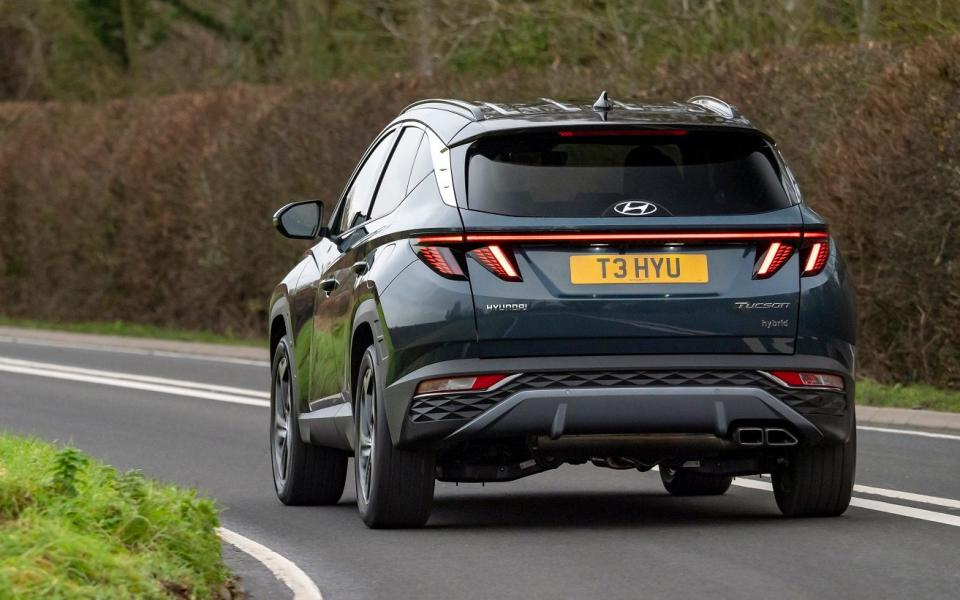
We had a chance to drive the 48-volt 1.6-litre car with four-wheel drive and 19-inch wheels and tyres, which felt a lot surer-footed on snowy Oxfordshire roads, with better steering and a better roll control. Snow really catches out these faux SUVs, however, and you feel a bit of fraud slip-sliding your way along a country road.
Best of the bunch was the all-the-bells-and-whistles Premium model, which has the adjustable damping. The chassis was still trying to roll into turns, but the quick-acting damping gave it a much better attitude to cornering, along with a better steering weight and a lot more positivity.
Conclusion
Full marks to Hyundai for upping the Tucson’s game both inside and out. There’s a lot to like here, but you need to go carefully through the brochure before signing on the PCP form; bigger wheels and tyres improve the car’s responses greatly and don’t have a huge effect on the ride, although the adjustable damping is the icing on the cake.
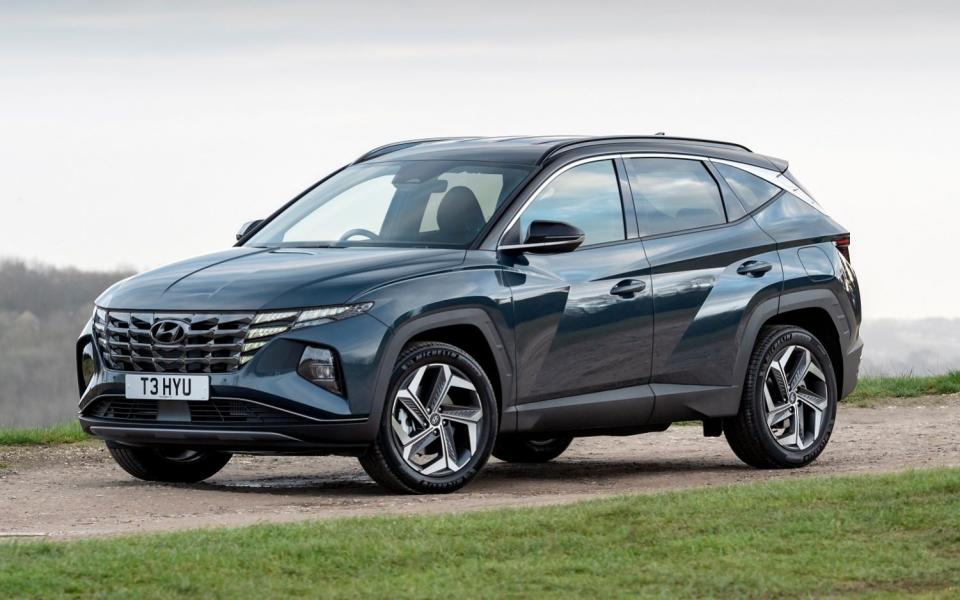
Trouble is, if you want a 4x4 car with those dampers you are looking at £37,380 for the Ultimate with the seven-speed twin-clutch DCT gearbox. Many buyers will be attracted by the price of the base-model cars, especially with Hyundai’s five-year unlimited mileage warranty, but a few shrewd purchases from the options list can transform the dynamics.
The facts
2021 Hyundai Tucson 1.6T-GDI 230PS Hybrid
TESTED 1,598cc four-cylinder turbo petrol engine with lithium-ion based self-charging hybrid system, six-speed automatic gearbox, front-wheel drive
PRICE/ON SALE range from £28,495 (£32,255 as tested in SE Connect trim)/now
POWER/TORQUE total system output 227bhp @ 5,500rpm, 195lb ft @ 1,500rpm
TOP SPEED 120mph
ACCELERATION 0-62mph in 8sec
FUEL ECONOMY 50.4mpg (WLTP), 45mpg on test
CO2 EMISSIONS 127g/km
VED £165 first year, then £140
VERDICT With a much improved appearance and interior quality, the Tucson is now up with the best in the non-premium segment. The facia layout works pretty well, especially with the separate heater controls, and it’s mostly a comfortable and spacious family hauler. Dynamically, the starter models are wanting, however; you need to go up the range to get larger wheels and adjustable dampers, and naturally enough it starts to get expensive.
TELEGRAPH RATING Four stars out of five
The rivals
Nissan Qashqai, from £22,875
Well-engineered, reliable and reasonably spacious (though it’s a smaller car), the Qashqai has defined this market at least in non-premium terms. Having been set up on UK roads, it rides and handles well and is an altogether better drive than it has a right to be. You might argue with the switchgear, and some of the smaller engine choices are asthmatic, but the Qashqai’s main problem is its sheer ubiquity.
Volkswagen Tiguan, from £25,190
This straitlaced German is forever the bridesmaid to the Qashqai in this market. Well built, comfortable and refined to drive, the Tiguan does the job well and the interior is flexible and spacious, but it’s expensive and a bit boring to drive. Seat’s Ateca is a better proposition.
Ford Kuga, from £26,675
This Focus-based crossover is now in its third generation and built in Spain. You can have the usual mix of conventional combustion engines with manual gearboxes, or a full plug-in hybrid system, which hasn’t been without teething troubles (though rivals have also suffered). Good to drive and spacious, but the interior is somewhat low-rent in places.
For new and used buying guides, tips and expert advice, visit our Advice section, or sign up to our newsletter here
To talk all things motoring with the Telegraph Cars team join the Telegraph Motoring Club Facebook group here

